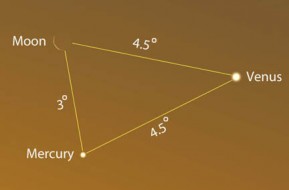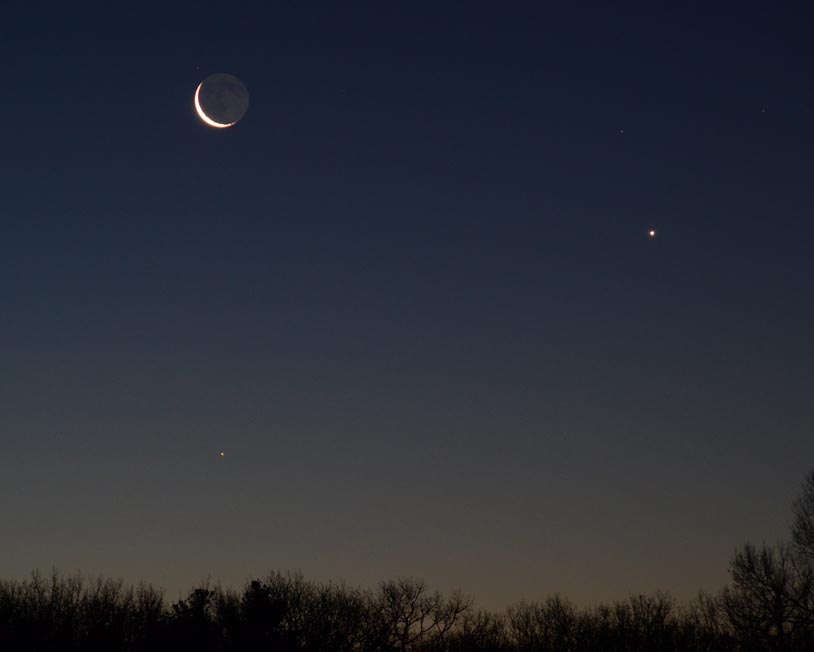Two planets and a pretty crescent Moon gather low above the southeastern horizon before dawn on February 6th.
Don't sleep in tomorrow morning. Sure, it's Saturday, but it'll be worth getting up early to see dazzling Venus, elusive Mercury, and a razor-thin crescent Moon clustered together low in the southeast.
You'll need to be outside and ready about 45 minutes before sunrise, roughly 6 a.m. (depending on your location). Find a spot with a clear, unobstructed view toward southeast. Bring binoculars if you have them.
Your reward will be a view of Venus, Mercury, and a thin crescent Moon clustered within about 5° of one another — they should all fit within the field of view of low-power binoculars.

Stellarium
Mercury might be challenging to spot, because it appears only 1% as bright as Venus does. But use the brighter planet as your guide: look toward its lower left, at roughly the 8 o'clock position, by about the width of your three middle fingers held together at arm's length.
The extremely thin waning lunar crescent, to the upper left of both planets, will be especially pretty. It'll be just 48 hours from new Moon. Be alert for the faint glow of earthshine on the dark portion of its disk.
The Moon is ending its week-long "bombing" of the ongoing five-planet parade. You'll have at least another week to enjoy the show, which will end its satisfying run (to rave reviews) once Mercury slips too deeply in the predawn twilight and exits Stage Southeast.
The coming year offers lots of other celestial sights, and there's no better guide to enjoying them than SkyWatch 2016. Its constellation maps and observing guides perfect for novice stargazers and anyone who's ever been amazed by the beauty of the night sky.
 1
1

Comments
GIANLUCA-MASI
February 7, 2016 at 7:47 am
great capture, Kelly, thanks for sharing it! It is nice to see a different scenario, after looking at the same bodies, a few hours earlier, from Rome, Italy. Here are some shots of mine:
http://www.virtualtelescope.eu/2016/02/06/the-moon-venus-and-mercury-a-sublime-meeting-6-feb-2016/
Keep up the great work
Gianluca
You must be logged in to post a comment.
You must be logged in to post a comment.